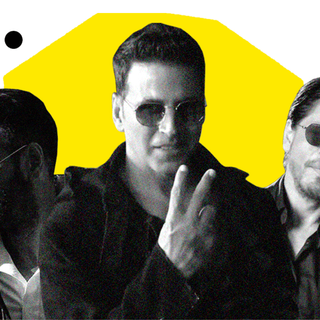Entering Tina Dabi’s name on a search engine yields a few hits consistently: “Tina Dabi age/husband/salary/caste.” On the weekend, the IAS officer announced her second marriage. The news made national headlines, with many wanting to know who her second husband is.
Dabi is a Dalit woman who topped the UPSC exams in 2015. Since then, she’s been subject to a relentless media gaze that, from the outset, had little to do with her accomplishments and more to do with astonishment. Amid a frequently spouted narrative that caste-based reservations undermine “merit” — with the unspoken implication that people from oppressed castes don’t have any claim to merit — here was a Dalit woman who emerged ahead of everyone else in her very first attempt at the examination.
“The unfortunate reality is that India is still very casteist. When my results were out, wishes poured in on the first day, but the next day, I started getting messages from the media asking for my caste, because my surname sounded different,” she told The Hindu.
Related on The Swaddle:
There Is No Such Thing as Achievement Through Pure Merit
This was soon followed by frenzied coverage of yet another aspect of her life: her marriage to a Muslim Kashmiri man Athar Aamir Khan, who in the same year was placed second in the UPSC exams. While their union was hailed by some corners as a “symbol of communal harmony,” other reactionary elements — the Hindu Mahasabha, for one — were quick to label the relationship as “love jihad.”
The Hindu Mahasabha’s National Secretary, Munna Kumar Sharma wrote a letter to Dabi’s father, stating, “This decision of your family will promote love jihad and thus the wedding should not take place at any cost. If the couple is still willing to tie the knot, then ghar-wapsi of Khan should be done and a wedding should take place only after he agrees to get converted.”
The virulently Islamophobic rhetoric took another turn when, two years later, the pair announced their separation by mutual consent. Commentators were breathless to conjecture that it had to do with the fact that Khan “tortured” Dabi to wear a burqa and convert to Islam, among other imagined grievances on her behalf.
This was arguably the first time many of these parties showed such a sustained, almost sincere interest in the well-being of a Dalit woman. In the same year, a 9-year-old Dalit girl was raped and murdered by a Brahmin priest and forcibly cremated; this incident itself following another in Hathras, where a young Dalit woman met the same fate, with the police forcibly cremating her before properly investigating the case. But Dabi is the only Dalit woman who received support from members of the Hindutva, with them even offering to help her family convert Khan into Hinduism.
The whole affair sought to achieve two ends: one, to appropriate a Dalit woman’s success into the fold of Hinduism; two, to alienate her Muslim partner as the “other” and separate from this success.
Related on The Swaddle:
UP Police Investigation of ‘Love Jihad’ Concludes What We Already Know — It Doesn’t Exist
Scholars have written that this is a tactic often used by the Hindu right: assimilating marginalized castes into the fold to assert a Hindu majority, while simultaneously creating a Muslim “other.” Casteism and Islamophobia thus go hand in hand. The story of Bhanwar Meghwanshi, author of I Could Not Be Hindu: The Story of a Dalit in RSS illustrates this point: In it, Meghwanshi narrates the story of how he participated in riots along with the Sangh, hated Muslims without having met one, and played a small role in the demolition of the Babri Masjid — all before realizing that the Sangh never considered him their equal and always meant to keep him in a subservient position within the Hindutva bureaucratic juggernaut.
Now, Dabi’s remarriage has once again fuelled vitriol on social media, when her wedding pictures showed a portrait of Dr. B.R Ambedkar in the background. Twitter users disparaged this fact, and once again invoked the debunked argument of reservation and merit to discredit her. They were quick to forget her achievements and their protectionism toward her against the “love jihad” bogeyman. There were also the usual misogynistic undertones to the hatred. In speculating about her marriages in this manner and continuing to fixate an unwavering gaze on her, the media attention undermines her own agency in choosing her partners and asserting herself as a distinguished Dalit woman in the public eye, unapologetically.




